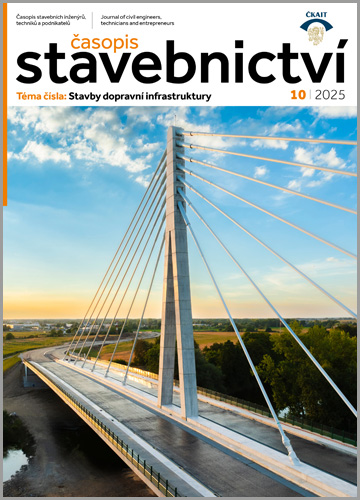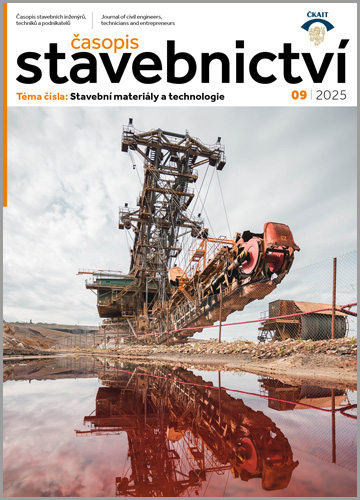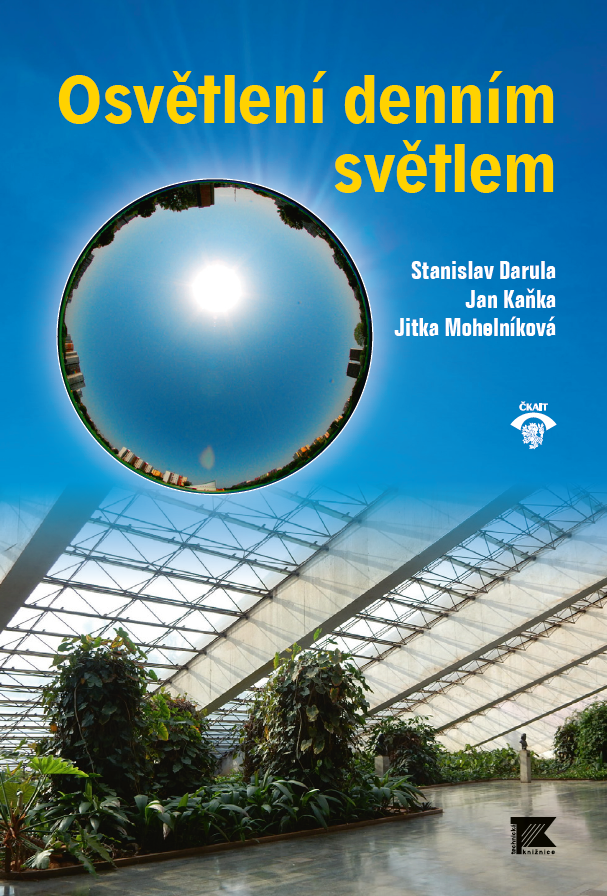TOB 1/2018
Editorial
Jubileum of Ing. Jaroslav Šafránek, CSc.
Petr Kučera
Laws, Technical Regulations, Standards and Recommendations
Changes in the standard ČSN 73 2901 Application of External Thermal Insulation Composite Systems (ETICS)
Pavel Svoboda
The article provides an overview of substantial changes in the revised ČSN 73 2901 Application of External Thermal Insulation Composite Systems (ETICS) [2], which is valid from 1. 10. 2017.
Indoor Climate Quality of Buildings
Air Quality in Social Care Buildings
Karel Srdečný
Social care buildings with allyear -long care, have to keep a good quality of air. The article compares three ways of ventilation and results of measurement in situ.
Projection, Theory, Surveys
Reference values for Evaluation of Energy performance of buildings
Jana Bendžalová
The aim of often complex calculation of energy performance of buildings is the as accurate as possible determination of the energy performance indicator of a building. However, the calculated indicator itself, such as for example the energy use expressed in kWh/(m².a), does not say anything about whether the building is energy-efficient or not. In order to assess the energy performance of a building, it is necessary to compare the calculated value of the indicator with the reference value. An inappropriate way of setting a benchmark and minimum requirements can potentially invalidate the accuracy of the calculation and demotivate the investor.
One of the second generation of CEN standards for energy performance of buildings calculation approved in January 2017 is EN ISO 52003-1 [5], that contains recommendations on how to use correctly the calculated indicators and, how to set benchmarks, scales and minimum requirements for energy performance of buildings. This European standard recommends the use of variable reference values tailored to a specific building or project. Under the H2020 project ALDREN, the different types of scale and benchmarking methods for the Voluntary Common European Union certification scheme for the energy performance of non-residential buildings will be tested. One option is the reference value determined on the basis of a reference (mirror) building, for which, among several other parameters, it is also important to take into account the entire concept of building design including the geometry.
Dynamic thermal characteristics in building Physics
Richard Slávik
One of the most common tasks in building physics is to find the temperature distribution in the structure and its surfaces. This temperature is often determined for steady state case, but sometimes it may also be important to determine the temperature and heat flux distribution in building component under unsteady thermal state. This calculation could be obtained by numerical methods, but there are also some situations where the harmonic analysis could be used. This concept is presented by the paper, which illustrates derivation and the physical meaning of its parameters.
The influence of window frames fitting into buildings on the surface temperature of connecting joint
Pavel Kasal, Jiří Novák
The subject of the article are the results of the study dealing with the influence of the geometric precision of fitting window frames into a building on the internal surface temperature near the connection joint. The article evaluates the measured deviations of window openings and fitted window frames. The evaluation covers the compliance with the requirements of ČSN 74 6077 for the geometrical precision of building openings, the effect of the least favourable combinations of deviations occurring during the implementation on the lowest internal surface temperature at the point of the connection joint and the risk of mold growth or water vapour condensation.
Rules for the design and realization of ETICS from a fire safety viewpoint
Vladimír Vymětalík
The article provides a brief and clear overview of how to design and realization the external thermal insulation by the ETICS in order to comply with the design principles and rules for ensuring the fire safety of buildings according to valid standards.
Green roofs and health
Pavel Dostal
This article follows two articles about the benefits of green roofs and facades for the microclimate of buildings and cities, published in previous editions of TOB in 2017. In this final part, the article discusses the contributions of greenery on buildings and in their surroundings for human health and the environment. The first two chapters introduce the role of green roofs and walls as a tool to lower air pollution and noise, the third chapter documents health benefits of proximity to green spaces for humans and the last chapter addresses biodiversity as a precondition for healthy environment.
Materials and Products for Buildings
Use of ETICS from MW plates with lower tensile strength
Milan Machatka
The article highlights the significant risk of loss of coherence between the ETICS basic layer and its thermal insulation from MW plates with lower tensile strength in the wind conditions of the Czech Republic. There is limited scope of application of this ETICS kit.
Architecture and Energy Savings
Surveys and Conception of Remedial Measures for Perimeter Wall of the St. Barbora temple in Kutna Hora
Michal Balík
The masonry of the gothic temple at Barbora in Kutna Hora has significant disturbances in terms of humidity and relative influences. The outer plinths have extensive destruction, the chaps inside the chapels are broken up to the area of the paintings. Surveys are objective information about their extent and causes. Measurements and investigations were made not only for the masonry but also for the interior. These investigations and measurements are the basis for the concept of a redevelopment proposal.
Realization and Quality of Buildings, their use
Risks of continued use of micro ventilation in the winter period
Jan Klečka
The article describes 2 examples of solved complaints in residential buildings, the content of which was the occurrence of water and even ice in the opening joint of windows and balcony doors. For both complaints, it was common that the client kept a balcony door with permanently set micro -ventilation even during the winter period to ensure a sufficient supply of fresh air into the new building with a tight envelope.
Education – Conferences – Reviews
Competition Green Roof 2018
Information of CZB
Information of CZB
Info Service
Author index 2017













